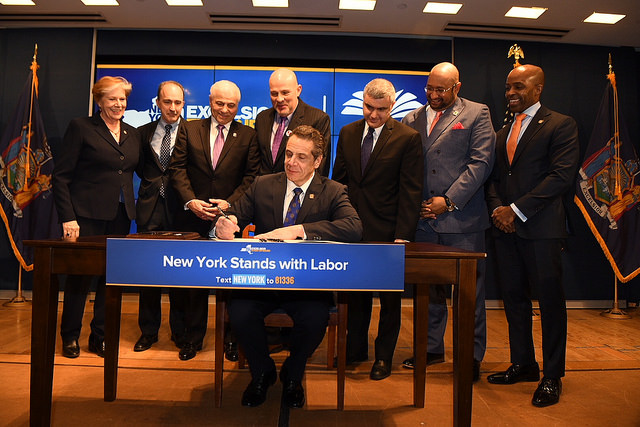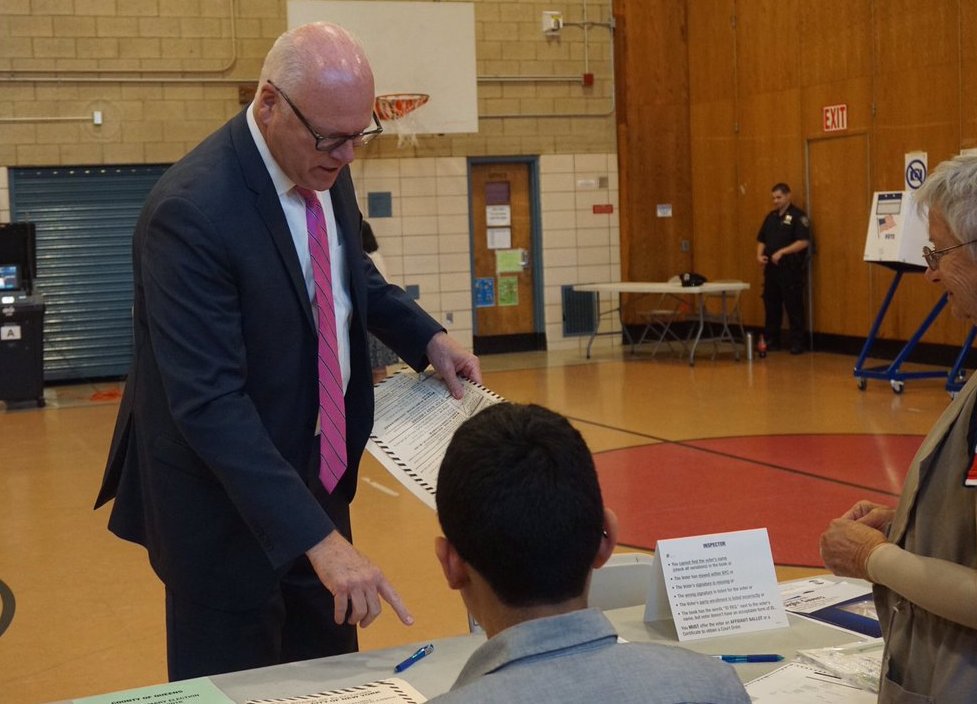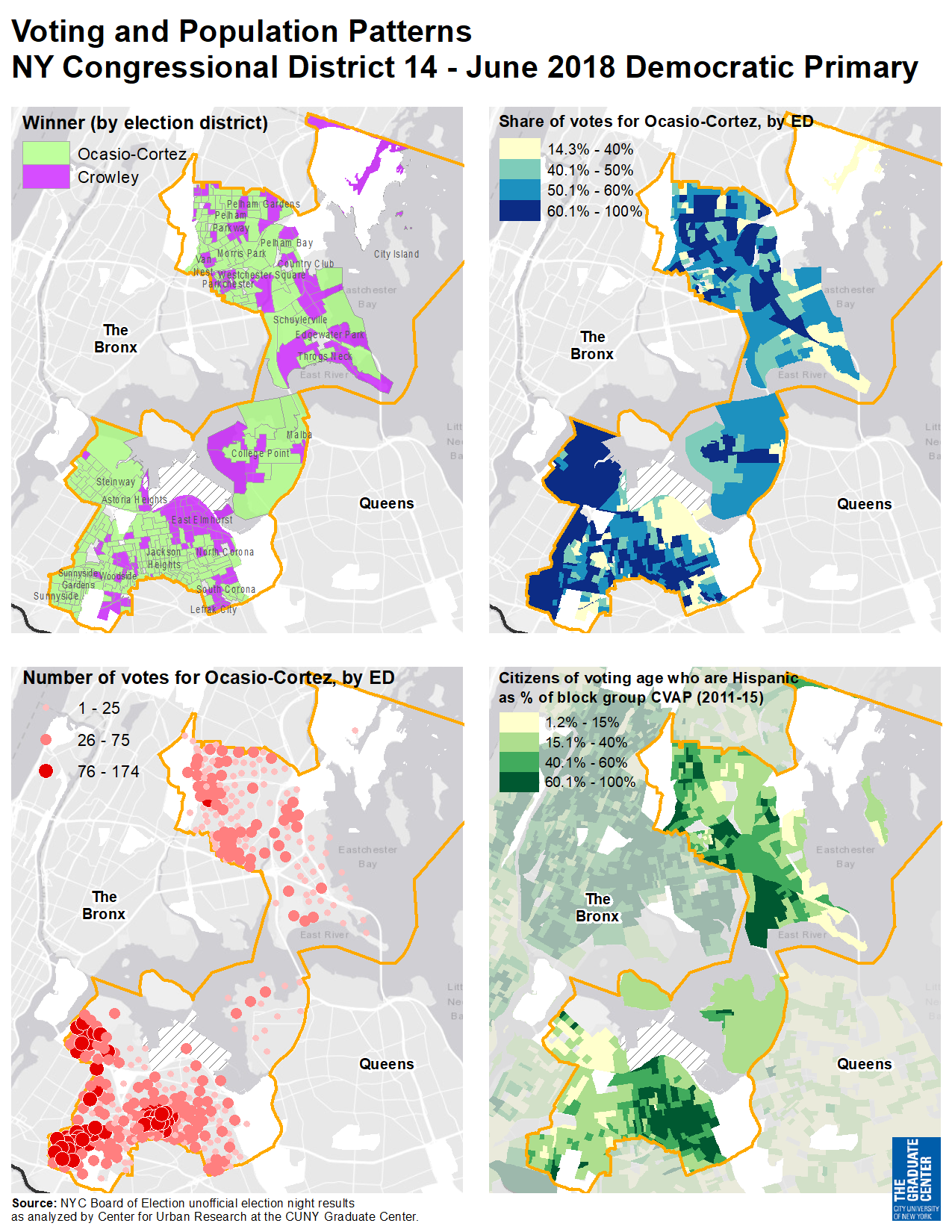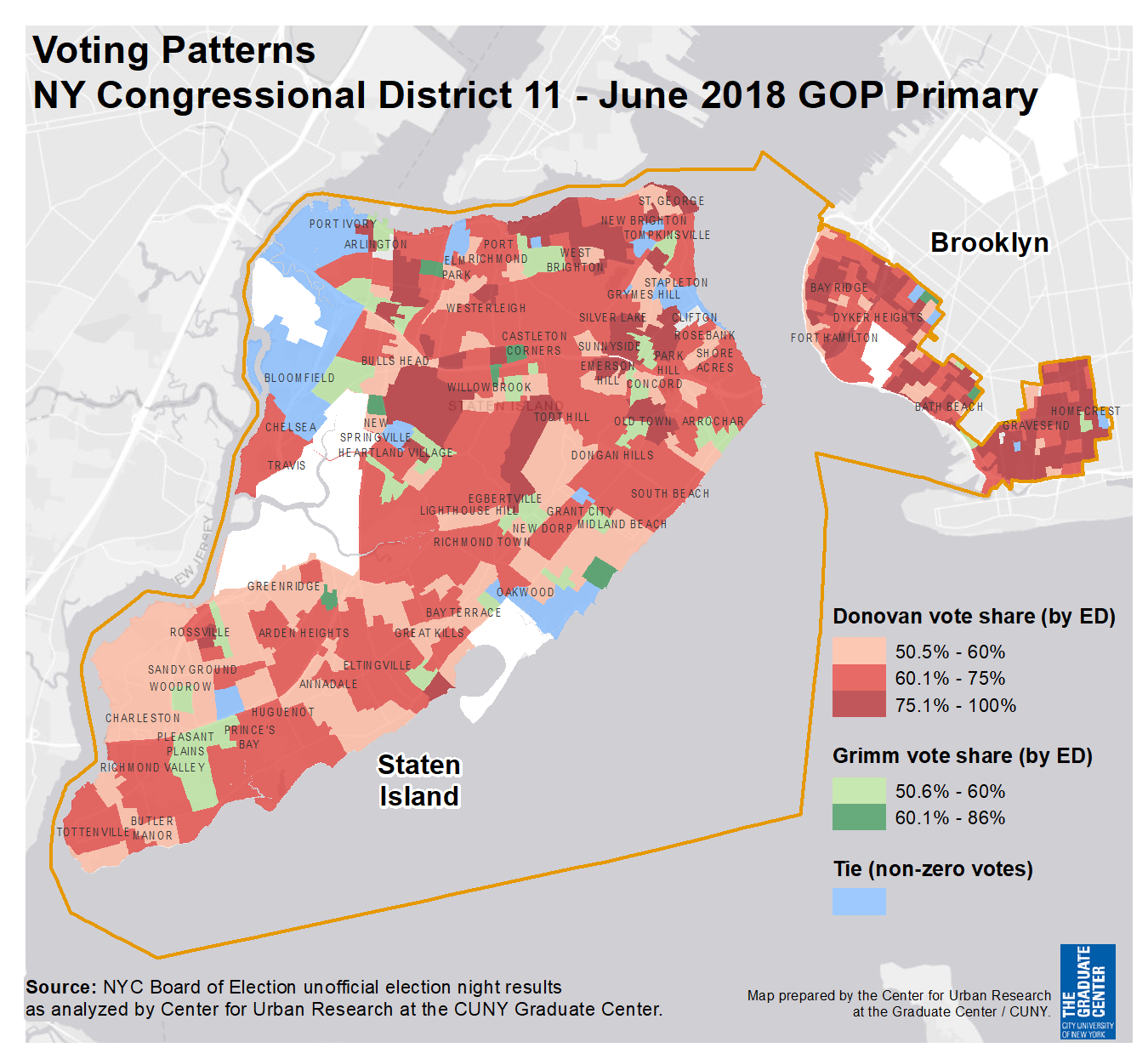‘It’s Really a Race’: Supreme Court Ruling Intensifies High-Stakes Battle for Public Workers

Gov. Cuomo supports labor unions (photo via the Governor's office)
On a recent morning, Pam Stemberg tiptoed toward an open doorway. "My job is to stalk people," she said.
That's not quite her job. An English professor at City College in Upper Manhattan, Stemberg chases down colleagues in her second role as a union organizer. But her union pitch hasn't emphasized pocketbook issues like wages or benefits; it’s been focused on the threat posed by a Supreme Court case called Janus v. AFSCME, which concerns whether millions of public sector workers nationwide can opt out of the fees imposed by the union that represents them.
On Wednesday, the high court handed down a landmark 5-4 ruling that labor advocates like Stemberg feared and conservative groups sought: public workers can now opt out of union fees and must affirmatively opt in.
The ruling intensifies a high-stakes recruiting war as public sector unions try to keep workers paying fees, while conservative groups persuade them to opt out or not opt in at all. If a critical mass of workers chooses to stop paying, it could financially cripple public sector unions, hurt their ability to organize and negotiate, and diminish their political contributions, which largely support Democrats. The outcome of the recruiting battle will determine the power of organized labor in New York, the nation’s most unionized state, with ramifications for much of the policy that comes out of Albany and City Hall.
"It's really a race," said Randi Weingarten, the president of the American Federation of Teachers, or AFT, a union that represents 1.6 million public employees nationwide and has affiliates with over 600,000 public workers and retirees in New York state, during an interview earlier this year. “This is an existential threat.”
At issue in the case were agency fees, payments assessed to workers whether or not they join the union at their job as full-fledged members. The lawyers for Illinois child support specialist Mark Janus argued that such fees violate workers’ free speech rights, since the payments go to support collective bargaining.
Because the salaries of public workers are borne by taxpayers, the bargaining services amount to coerced political speech, the lawyers argued. Unions said the fees are necessary because workers who decline to pay them become freeloaders, benefiting from union services without financially supporting them.
Ultimately, Janus prevailed. The high court’s five conservatives sided with Janus, while its four liberals dissented. Trump-appointee Neil Gorsuch, who cast apparently decisive votes on Tuesday in contentious cases concerning abortion and the Trump travel ban, again showed his impact on the court.
Overall union membership in the United States has plummeted for decades, reaching an all-time low of 10.7 percent in 2016, but public-sector union membership nationwide has held steady at a far higher rate of 34.4 percent. That rate is even greater in New York, where two out of every three of the state's 1.4 million public sector workers belong to a union, the highest such rate for any state in the country.
Now that public sector union fees are optional, some workers will likely rescind their payments, reducing union revenues. Consider Michigan, Wisconsin, and Indiana, where right-to-work laws passed in the last decade have contributed to an average 2.1 percentage point drop in union membership, according to the left-leaning Illinois Economic Policy Institute.
The decision in favor of Janus will result in the eventual loss of 726,000 public sector union members nationwide, a decline of 15.3% in the 22 states that, until now, have required workers to pay union fees, an Illinois Economic Policy Institute report said last month. The study predicts that 136,000 of those lost fee-payers will be in New York, a more than 10-percent drop in the state.
The unions have sought to minimize their potential post-Janus losses by converting fee-payers to full-fledged members, and so retaining their payments, said Shaun Richman, program director of the Harry Van Arsdale Jr. Center for Labor Studies at SUNY Empire State College and a former organizing director with the AFT.
“The public sector unions are making sure they ask every single represented worker to join,” he said.
The Professional Staff Congress, or PSC, a union that represents 30,000 faculty and staff in the public university system in New York City, added two full-time organizers to what was a staff of five, said vice president Mike Fabricant. Another 200 union members, including Stemberg, have been talking to coworkers one-on-one about the importance of supporting the union, Fabricant said.
“They’re the lifeblood,” he said. “When a faculty member or staff person makes that argument it has a different gravity than when a PSC organizer does.”
A year ago, 86 percent of full-time professors represented by PSC were members; now 94 percent are, Fabricant said several weeks ago. The union has also seen an uptick in membership among adjunct professors: 54 percent a year ago has jumped to 62 percent, he added.
In April, Governor Andrew Cuomo signed a law that helps unions soften the blow of a decision in favor of Janus. The law requires public employers to inform unions of new hires and let them meet with the workers within 30 days; it also allows the unions to deny some services to workers who opt out of paying fees.
But the decision in favor of Janus will intensify right-wing outreach aiming to encourage public workers to opt out of union fees, said Dan DiSalvo, a senior fellow at the conservative Manhattan Institute and a professor of political science down the hall from Stemberg, at City College. In recent weeks, the conservative Freedom Foundation has sent mailings to workers on the West Coast about their now newfound opportunity to opt out. In the past, the Freedom Foundation has event sent organizers to knock on workers' doors.
“It’s a communications war,” DiSalvo said.
“The position of Janus is his First Amendment rights are being violated because he’s being forced as a condition of his job to pay into an organization with which he disagrees politically,” DiSalvo said. Conservative groups are “not trying to recruit anyone to become a conservative or anything like that, but to inform people of their rights.”
Richman says such recruitment will eventually reach populous blue states, the union strongholds.
“Nobody should be under any illusions that that’s not going to happen in Illinois, in California, in New York,” Richman said. “You might think they’re going to get punched in the face if they knock on the door to get people out of the union. They’re going to do it anyway.”
If public sector workers decline initial overtures from such groups, the workers can still withdraw from union fees down the road. “This is something that’s going to play out a bit longer than ‘oh, today there are unions; tomorrow there aren’t,’” said Richman.
The political implications could be significant, reducing the power not only of public sector unions but of the liberal politicians they support. “Perhaps there will be a rebalancing of the political playing field in states like California and New York,” said DiSalvo. “There might be a better policy mix.”
At the April signing of a bill to help unions in the event of a ruling in favor of Janus, Cuomo condemned the anticipated decision as an attack on workers.
"Too often, and at the hands of this federal administration, we are seeing the labor movement going backwards,” he said. “In New York it is a different story, and our efforts to protect working men and women are moving labor forward, making the workplace fairer and more just than ever before.
On this issue, Mayor Bill de Blasio appears to be in lockstep. "Organized labor brought us the middle class in this country," de Blasio reportedly said on Tuesday when asked about the then-impending Janus decision, adding that the anticipated outcome would be misguided and troublesome.
When the ruling came down on Wednesday, United Federation of Teachers (UFT) President Michael Mulgrew issued a statement, saying: “The Janus decision reflects years of scheming by forces desperate to destroy workers' rights and to undermine public education." He added that the teachers union "will remain strong, and we will not be silenced. Everything we have been able to accomplish for our members and our students has come from our ability to work together, and we will continue to fight for the rights of workers, their families and for public education.”
Stemberg said when she talks to coworkers, she focuses on building bonds, hoping that will minimizing any long-term losses. “You’re not only getting them to sign up but to value the union,” she said.
She said the organizing around a Janus decision has been bittersweet.
“I’m so grateful more people are paying attention,” she said. “Did I want it to be this way with Damocles’ sword hanging over our heads? Absolutely not—it’s scary.”
***
by Max Zahn for Gotham Gazette
@GothamGazette @MaxZahn_
A Closer Look at Voter Turnout in 2018 New York Congressional Primaries

Rep. Joe Crowley votes (photo: @JoeCrowleyNY)
Alexandria Ocasio-Cortez’s upset primary defeat of Representative Joe Crowley has sent shockwaves through both the New York and national political worlds.
The 28-year-old Latina democratic-socialist who has never held elected office and refused money from corporate PACs stood in stark contrast to Crowley, a 56-year-old, ten-term Congressional representative who was a prolific Democratic Party fundraiser, served as the chair of the Queens Democratic Party, and was seen by some as the next Democratic Speaker of the House.
Ocasio-Cortez’s win is being partly attributed to her campaign’s organizing, strong ground game, and significant social media presence, as well as its embrace of progressive policies such as ICE abolition and single-payer healthcare. She didn’t merely upset Crowley, she won handily, by a margin of 57.5 percent to 42.5 percent.
Maps compiled by the CUNY Center for Urban Research show that support in the election that has the country buzzing did not break down neatly on racial lines; in fact, Ocasio-Cortez maintained strong support throughout the district, across areas of various demographic makeups.
“This wasn’t a fluke,” said Steven Romalewski, of the Center for Urban Research. “She was able to get voters from almost every neighborhood to come out and support her.” Romalewski noted that, contrary to the conventional wisdom of voting on racial lines, the areas where Ocasio-Cortez’s showing was strongest were areas that weren’t predominantly Hispanic, signaling that her showing may not have been due to the district’s changing demographics (it has been steadily becoming less white for years), but due to desire for change from Crowley.

Though Ocasio-Cortez whipped up energy among voters in the Queens and Bronx district, and there is little to compare voter turnout to because Crowley had not been challenged since 2004, the primary election was decided, like most elections in New York, by a relatively small number of people.
With 98 percent of precincts reporting as of Wednesday, the State Board of Elections shows 27,826 registered Democrats cast votes in Tuesday’s primary in New York’s 14th District. With 235,745 registered Democrats as of April, according to the BOE, this comes out to a turnout of around 11.8 percent.
This turnout is about the same as in Crowley’s last competitive primary, in 2004. According to the Federal Election Commission, 12.4 percent of Democrats in Crowley’s district voted that year, which was a presidential election year, unlike this year, and saw congressional and state-level primaries on the same September day. New York has since moved its congressional primaries to June.
For comparison, when Crowley was reelected to Congress two years ago, in 2016, he faced no primary opponent and nominal competition in the general election, but in the general he received 147,567 votes as many more voters turned out on Election Day than typically do for party primaries, even when they are competitive. Ocasio-Cortez will herself now face Republican Anthony Pappas and Conservative Elizabeth Perri in the general election, but is expected to win easily.
Regardless of the low primary turnout, Romalewski characterized Ocasio-Cortez’s win in the same way as most other observers: a massive upset.
“The challenger was able to do something with her supporters that the incumbent wasn’t,” Romalewski said. “And that’s surprising given that the incumbent has the power of incumbency, has the power of the party machine behind him, and has the power of endorsements, and long time political support in both counties, Queens and the Bronx, and that was not enough to hold off the challenger. So that’s a big upset.”
Turnout on Tuesday was similarly low in other closely-watched congressional primaries. In the 9th District, in Brooklyn, where Representative Yvette Clarke narrowly beat New York Times-endorsed Adem Bunkeddeko 52 to 48 percent, Democratic turnout is only at about 8.2 percent with 99 percent of precincts reporting, according to the BOE. 28,663 Democrats voted out of 347,466 total in the district.
In the 12th District, including parts of Manhattan and Brooklyn, where Representative Carolyn Maloney dispatched challenger Suraj Patel 58 to 41 percent, Democratic turnout stands at about 13.6 percent with 99 percent reporting. 41,460 Democrats voted out of 304,115 total in the district.
Turnout was slightly higher in the Republican primary in the 11th District, covering Staten Island and part of southern Brooklyn, where incumbent Representative Dan Donovan was seemingly running a tight race with his predecessor Michael Grimm, only for Donovan to handily beat Grimm, 63 to 36 percent. That primary, featuring a rare such primary battle of the two most recent officeholders and an apparently race-altering endorsement of Donovan by President Donald Trump, saw a turnout of 17 percent of registered Republicans -- 20,118 Republicans voted out of 117,983 registered in the district.
Romalewski said that the high profile nature of the race played a part in the higher turnout. “Not only was it a high profile race, but there was an incumbent and a former incumbent running for the primary vote,” he said. “So there was a lot of institutional support on both sides, and a lot of interest on both sides, and a lot of familiarity with the voters, so it’s not surprising that there was relatively robust turnout in District 11.”

Similarly to Ocasio-Cortez’s convincing win District 14, Romalewski noted that Donovan’s strong support was widespread across the district rather than being concentrated in pockets. He won the overwhelming majority of election districts, and beat Grimm by significant margins in both the Staten Island and Brooklyn sections of the district.
In the crowded Democratic primary in District 11, Max Rose defeated five other Democratic hopefuls with 63 percent of the vote. That primary saw a turnout of 8.5 percent -- 17,098 Democrats voted out of 200,410 total registered in the district. The Donovan-Rose general election is expected to draw a lot of interest, and money, from around the state and country, as Democrats see it as a possible pick-up toward flipping the House.
In Maloney’s last noteworthy primary challenge, from Reshma Saujani in 2010, turnout stood at 16.4 percent. The last competitive primary in the district represented by Donovan was in 2010, when it was the 13th District and Grimm defeated Michael Allegretti in an election with 13.7 percent turnout. Both of these primaries occurred before a 2012 federal court decision that led New York to become the only state this year with separate federal and state primary days, wherein the state was forced to move its congressional primary earlier in the year and lawmakers declined to also move the state-level vote. The separate days can depress turnout, says Romalewski.
“In recent years, there’s been as many as four elections within a year, primaries and generals, that people have to turn out for,” he said. In 2016, New York voters turned out for presidential primaries in April, congressional primaries in June, state and local primaries in September, and finally the general election in November. “It definitely risks voter burnout, the opposite of turnout.”
Clarke’s last primary challenge, in 2012, saw a 6.2 percent turnout. Maloney faced a challenge in 2016 from attorney Peter Lindner, in a race that saw a 6.7 percent turnout.
Turnout was similarly low elsewhere in the city and state. In the 5th District, where Representative Gregory Meeks won 81 percent of the vote against two challengers, Mizan Choudhury and Carl Achille, saw a 3.8 percent turnout. In the 16th District, Eliot Engel dispatched three challengers -- Jonathan Lewis, Derickson Lawrence, and Joyce Briscoe -- with 74 percent of the vote in an election with 9.8 percent turnout.
***
by Ben Brachfeld, Gotham Gazette
@GothamGazette
New York General Election Congressional Matchups to Watch - End of June

Dan Donovan (center) & Max Rose (photos via @dandonovan_ny & @MaxRose4NY)
The congressional primaries in New York on Tuesday saw a shocking defeat for a Democratic party giant in Queens while other Democratic incumbents in the city held on with close margins. And on Staten Island, a closely-watched Republican primary ended with a wider margin for the incumbent victor than expected.
All eyes will now turn to the general election, with the full slate of candidates in focus. Nationally, Democrats are attempting to claw back a majority in the 435-seat House of Representatives by flipping key Republican seats -- they currently hold 193 seats and Republicans hold 235, and there are seven vacancies -- while Republicans are hoping to fend off a blue wave that has put them on the back foot in dozens of races across the country. New York races are expected to factor significantly into the House balance of power.
In New York, according to The Cook Political Report, there are five competitive congressional races, all held by Republicans, among the state’s 27 seats. Two are considered a toss-up -- the District 19 seat held by Rep. John Faso and the District 22 seat held by Rep. Claudia Tenney; the District 11 seat, where incumbent Rep. Dan Donovan prevailed in Tuesday’s primary, leans Republican; and District 1, held by Rep. Lee Zeldin, and District 24, held by Rep. John Katko, per Cook’s predictions, are considered “likely Republican.”
The Donovan seat is the only congressional district held by Republicans in New York City.
The Democratic Congressional Campaign Committee is more closely focused on Districts 11 and 22, under its organized ‘Red to Blue’ effort, backing army veteran Max Rose to challenge Donovan, and state Assembly member Anthony Brindisi against Tenney.
And there are still other races where candidates are seen as more long-shots to win, but given the surprise leveled Tuesday by Alexandria Ocasio-Cortez against Democratic Rep. Joe Crowley and the successes of Democrats, especially women, in other races in New York and elsewhere since Donald Trump’s election, some additional districts may be in play. For example, Liuba Grechen Shirley won her Democratic primary Tuesday and will now attempt to unseat incumbent Republican Rep. Peter King on Long Island.
Governor Andrew Cuomo, a two-term Democrat running for reelection himself, has also committed the state Democratic Party’s machinery to support Democratic congressional challengers. “Our focus now must turn to winning back the House of Representatives, and the road to accomplishing that runs right through New York State,” Cuomo said, in an email blast sent out by the state party on Wednesday morning. “The only way to stop Donald Trump and his hateful agenda over the next two years is to win back the House of Representatives,” he added, appealing for volunteers to join phone banking and canvassing efforts in the next few weeks.
As New York and the country move toward November’s Election Day, congressional races are now set, while state-level primaries will happen on September 13 for all 213 seats in the state Legislature and the state-wide posts of governor, lieutenant governor, comptroller, and attorney general. While those elections are being fought out, throughout the summer and into the fall, there will also be a good deal of attention of the state’s most contentious congressional races.
District 11
After a caustic primary battle, Rep. Dan Donovan, a former district attorney, emerged victorious over Michael Grimm, who held the seat before Donovan but resigned after pleading guilty on charges of tax fraud. Both candidates tried to ride the coattails of Republican President Donald Trump, tying their records to his own in a district that overwhelmingly voted for him in 2016 -- the district covers all of Staten Island and a small section of southern Brooklyn.
Grimm, despite his felony conviction, had a strong base of support on Staten Island but Trump endorsed Donovan a few weeks before the primary, pushing him far over the top in what became one of the most hard-fought primaries across the state. Donovan claimed victory with 63.9 percent of the vote to Grimm’s 36.1 percent.
On the Democrat side, decorated army veteran Max Rose emerged victorious with a similar vote share, pulling in 64.7 percent to beat five other Democrats for the nomination. Rose ran a well-funded campaign with support from the DCCC, raising a total of $1.6 million through June 6, according to Federal Election Commission filings.
Rose was formerly an executive at a nonprofit health care organization and worked as director of public engagement and special assistant under late Brooklyn District Attorney Ken Thompson. He has received endorsements from several local and state-level elected Democrats as well as prominent national Democrats -- including U.S. Sen. Kirsten Gillibrand of New York and Rep. Crowley. He was also backed by the local Brooklyn City Council Member, Justin Brannan. The Working Families Party and the Women’s Equality Party endorsed him, as did several unions and political action groups.
In a brief phone interview Wednesday, Rose said he will stay the course on his approach to the campaign. “The strategy does not change,” he said of moving on to the general election. Rose said his opponent “will do and say anything” to get reelected, including attempting to rewrite his record as he moves closer to the president. “So we’re gonna win the old-fashioned way. We’re gonna take it day-by-day, door-by-door, and Dan Donovan doesn’t stand a chance,” he said.
Though the district is split between two boroughs, Rose said his pitch wouldn’t be determined by the community where he campaigns, but rather by the bread-and-butter issues that residents care about. “[W]hat matters is what is troubling voters each and every day,” he said, pointing to crumbling infrastructure, interminable commutes, an increasing cost-of-living and the hundreds of opioid overdoses in Staten Island.
“We have got to earn voters’ trust first and then convince them that it does not have to be this way under any circumstances,” he said.
“People are disgusted across the board,” he continued. “We don’t have a South Brooklyn strategy, a Tottenville strategy, a St. George Strategy. That’s what’s wrong with politics, is that politicians try to slice and dice the electorate. They use poll-testing and based off some high-level analytics they say one thing to the community here and…say something in another community.”
For his part, Donovan used part of his victory speech Tuesday night to stress the importance of holding onto the GOP’s lone New York City congressional seat, and he connected the race to the larger battle for the House, warning his supporters that Democrats want to impeach Trump if they win control of the chamber.
District 19
Republican John Faso currently holds the District 19 seat in the Hudson Valley and the Catskills but is widely seen as a vulnerable incumbent in a toss-up seat. A former state Assembly member, Faso won the seat in 2016 after the retirement of Republican Rep. Chris Gibson. Like Donovan, Faso voted against the recent tax cuts passed by Congress and signed by Trump, and has also criticized the president’s “zero tolerance” policy that separated thousands of migrant children from their parents. He ran unopposed in the primary and FEC filings show he has about $1.1 million in his campaign coffers.
Faso’s Democratic opponent in the general is Harvard Law graduate and Rhodes scholar Antonio Delgado, who won in a crowded primary that saw millions in campaign money coming in for all the candidates. Delgado was endorsed by Citizen Action of New York, a progressive, left-leaning organization that is now one of the few groups at the core of the Working Families Party. Delgado secured about 22 percent of the vote, which was enough to place him first over six other Democrats. He outraised all his primary opponents and has about $759,000 left for the general election.
District 1
Last night, Perry Gershon, a former businessman who’s framed his race as one against Trump, won the Democratic Party’s nomination to run in this eastern Long Island district. The Cook Political Report rates NY-01 as “Likely Republican,” and it went twice for Barack Obama before supporting Donald Trump in the 2016 election. Gershon will challenge two-term Republican incumbent Rep. Lee Zeldin, who won re-election in 2016 by 16 points over his Democratic opponent. As of June 6, Zeldin maintains over a 3-1 fundraising lead over Gershon.
District 2
First-time candidate Democrat Liuba Grechen Shirley will challenge incumbent Republican Rep. Peter King, who has been in office since 1992, in this Long Island district that also voted for Trump after supporting Obama twice. King won his most recent re-election with 62.5% of the vote, defeating Democrat DuWayne Gregory, who also lost to Grechen Shirley in Tuesday’s primary election. The day after her primary victory, Grechen Shirley challenged King, who recently said that town halls “diminish democracy,” to a series of five public debates. The incumbent, as of the beginning of the month, has over $3 million on hand, while Grechen Shirley has slightly less than $150,000 left over after her primary campaign.
District 3
Democrat Rep. Tom Suozzi won his seat in this district covering Long Island’s North Shore and part of Queens by a six-percent margin in 2016. NY-3 is narrowly Democratic, and it voted for Clinton in 2016 by the same margin as Suozzi. Republican challenger Dan DeBono ran unopposed in the Republican primary but, going into the general election, has less than one-tenth of the cash on hand as the incumbent.
District 22
First-term Republican Rep. Claudia Tenney narrowly won this large, rural, and majority-white central New York district in 2016. Democratic State Assembly Member Anthony Brindisi, who faced no primary challenger, will challenge Tenney in the general election. Tenney is a hardline conservative endorsed by the Tea Party and the National Rifle Association, and the district went for Donald Trump by 16 percent in 2016.
Brindisi’s fundraising has, at times, outpaced Tenney’s, and, as of June 6, the challenger maintains a $400,000 cash lead over Tenney. An April poll conducted by the Democratic Congressional Campaign Committee reported that 50% of voters in the district would favor Brindisi, who has been attempting to appeal to the district’s moderate Republicans, in the general election, compared to 44% supporting Tenney.
District 24
In this central New York district that voted for Trump once and Obama twice, Democratic law professor Dana Balter will face off against incumbent Republican Rep. John Katko. Katko styles himself a moderate Republican, claiming to have written in Nikki Haley’s name for president in 2016, though he has voted in line with the president approximately 90 percent of the time. Running for a third term in the House of Representatives, Katko won both his previous races by margins of about twenty percent. He maintains a 13-1 fundraising lead over Balter, who advocates for Medicare-for-All, a carbon tax, and elimination of cash bail.
***
by Samar Khurshid and Daniel Yadin
***
by Samar Khurshid, senior reporter, Gotham Gazette
@samarkhurshid @GothamGazette




